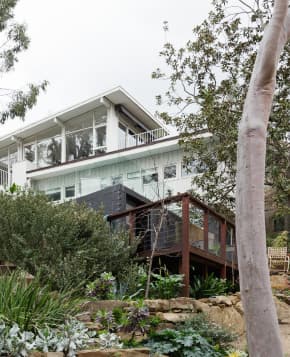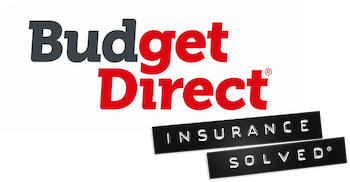Insuring your home against bushfires
In her famous poem ‘My Country’, poet Dorothea Mackeller describes Australia as a land of droughts and flooding rains.
But it has also become synonymous with bushfires, which occur regularly during droughts and heatwaves.
Budget Direct Home and Contents Insurance protects your most precious asset and its contents against loss or damage caused by fire, including bushfires and grassfires.
If you live in a bushfire-prone area, make sure the amount you insure your home for is sufficient to replace it if it burns down.
What is a bushfire?
A bushfire is an uncontrolled fire that burns in grass, scrub, bush, or forests; it’s also known as a wildfire.
Common causes of bushfires include lightning, arcing from overhead powerlines, arson, controlled-burn escapes, and accidental ignition (e.g. discarded cigarettes, unextinguished campfires).
Local topography influences the threat of bushfires: Those in steep, forested areas are generally more severe, unpredictable and harder to fight than blazes along flat, grassy areas, for example.
How is a home’s bushfire risk calculated?
In Australia, a home’s susceptibility to bushfire is described in terms of its Bushfire Attack Level (BAL).
The BAL is a measure of the severity of a building’s potential exposure to ember attack, radiant heat, and direct flame contact.
Part of Australian Standard (AS) 3959-2009, Construction of buildings in bushfire-prone areas, the BAL ratings (see table below) are used to determine the construction requirements for homes approved and built (or rebuilt) after 10 September 2009.
The standard – introduced in the wake of the ‘Black Saturday’ bushfires in Victoria, which killed 173 people and damaged or destroyed more than 2000 homes – aims to reduce the risk of a building igniting during a bushfire.
The higher a building site’s BAL, the more stringent the construction requirements, which cover floors, roofs, external walls and windows, verandahs, and carports.
Bushfire Attack Level assessment methods
There are two methods for assessing a building site’s Bushfire Attack Level (BAL), as described in AS3959-2009; one method simple, the other less so.
The simple method – suitable for most sites, namely those with reasonable setbacks to vegetation situated on relatively flat ground – involves finding out the:
- fire danger index (FDI) of the relevant state, territory or region
- classified vegetation type/s near the allotment
- distance of the building site from the vegetation
- slope of the ground under the vegetation in relation to the building site (upslope or downslope)
The more complicated BAL assessment method is typically used for building sites with limited setbacks to vegetation situated on hilly ground.

Bushfire Attack Level ratings
The following table shows the six Bushfire Attack Levels (BAL) ratings, in ascending order of severity.
The numerals denote the radiant heat flux, which is expressed as kilowatts per square metre (kW/m2). BAL–29, for example, denotes a radiant heat flux of up to 29kW/m2.
| Rating | Description |
|---|---|
| BAL–Low | There is insufficient risk to warrant specific construction requirements. |
| BAL–12.5 | Ember attack. |
| BAL–19 | Increasing levels of ember attack and burning debris ignited by windborne embers together with increasing heat flux. |
| BAL–29 | Increasing levels of ember attack and burning debris ignited by windborne embers together with increasing heat flux. |
| BAL–40 | Increasing levels of ember attack and burning debris ignited by windborne embers together with increasing heat flux with the increased likelihood of exposure to flames. |
| BAL-FZ (Flame Zone) | Direct exposure to flames from fire front in addition to heat flux and ember attack. |
What is my home's Bushfire Attack Level?
The first step to finding out your home’s Bushfire Attack Level (BAL) is to contact your local council to confirm whether your home is in a designated bushfire-prone area.
Only if your home is in an area prone to bushfires do you need to consider getting its BAL assessed.
BAL calculators are available online, however they require you to input information found in AS3959-2009, which you must buy; if you’re not technically minded, you might find this task difficult.
Alternatively, your council may be able to assess your home’s BAL; or you could engage a bushfire consultant through the Fire Protection Association Australia.
What does my home’s bushfire risk mean for my insurance?
Following the ‘Black Saturday’ bushfires in Victoria, new national construction requirements (AS3959-2009) were introduced on 10 September 2009, to better enable buildings to withstand bushfires.
If your home was built before then and it burns down, it may – depending on its Bushfire Attack Level – have to be rebuilt to a higher standard than it was originally constructed.
These higher construction standards can significantly increase the cost of rebuilding your home.
It’s therefore critical you take this into account when calculating the cost of replacing your home – the ‘sum insured’ – otherwise you run the risk of it being underinsured.
If your house is not in an area prone to bushfires – as is the case with most houses in urban areas – it won’t be subject to the construction requirements of AS3959-2009, so you won’t have to factor them into your sum insured.
Replacement-cost calculators
Calculating the cost of replacing your home is complex. To make it easier, we’ve made available some calculators from leading estimators Finity and Sum Insured.
If your home is within 15m of bushland or between 16m and 100m away from bushland, the calculators will assign your home a rating of BAL-FZ or BAL-40 respectively.
The calculators will then take the BAL rating into account when estimating the cost of rebuilding your home in accordance with the construction requirements of AS3959-2009.
For example, the calculators may add the costs of screening weepholes in masonry walls and upgrading timber weatherboards to bushfire-resistant timber.
While the calculators will provide you with a reasonable estimate, it’s up to you to decide how much it would cost to replace your home and contents if they were totally destroyed.
So you may wish to get a more accurate estimate from an architect, builder, quantity surveyor, valuer or other suitably qualified professional. (This will probably entail getting your home’s BAL double-checked, if it’s in a designated bushfire-prone area.)
Included benefits
A Budget Direct Home and Contents Insurance policy includes the following benefits:
| Benefit | Description | Claim limit |
|---|---|---|
| Temporary accommodation | If your home is destroyed in a fire or fire damage makes it unliveable, we’ll pay for temporary accommodation for you and your pets. | Up to 12 months, up to 10% of your sum insured.§ |
| Debris removal and extra rebuilding costs | Removal of debris resulting from fire damage and extra rebuilding costs, including demolition and professional (e.g. architect, surveyor, engineer) and building-application fees. | Up to 10% of your sum insured.§ |
| Disposal and storage of contents | The reasonable costs to remove and dispose of your fire-damaged contents and store your undamaged contents | Up to 10% of your sum insured.§ |
§ We’ll pay you this amount in addition to your total sum insured.
Upgrade your cover
For an additional premium, you can customise your home and contents insurance by adding one or more of the following optional covers to your policy:
How do I add an optional cover to my policy?
You can add one or both of these optional covers when you get a quote and buy a policy or – if you’ve already bought a policy – by contacting us or logging into your online account and editing your policy.
Find out more
The information on this page is a summary only. For more details about Budget Direct home and contents insurance, including the terms, conditions, limits and exclusions that apply, please read the Product Disclosure Statement (PDS)
How to make a claim
If your home and/or contents are lost, damaged or destroyed by an insured event and you need to claim, we’re here to help. Make a claim on your home insurance policy.
How soon after buying my policy will I be covered for bushfires?
Your home and/or contents will be instantly covered for bushfires if your insurance policy started:
- immediately after another policy covering the same risk with the same level of cover ended, without a break in cover; or
- the same day you bought your home or moved to a new address.
Otherwise, your cover for loss or damage due to bushfires will start 72 hours after you buy your policy.
This is designed to stop people taking out cover immediately before anticipated bushfires and then claiming. This in turn helps keep your premiums down.
Is my car covered for bushfires?
Budget Direct Comprehensive Car Insurance and Third Party Fire and Theft Insurance can cover your car for loss or damage due to fire, including bushfires.
Rural fire services
The following rural/country fire service websites include information about fire warnings and restrictions, and planning and preparing for fires:
Frequently asked questions
Does home and contents insurance cover bushfires?
Yes — Budget Direct home and/or contents insurance covers loss or damage due to bushfires.
We’ll pay to repair or — if it burns to the ground — replace your home (and/or contents), up the sum you’ve insured it for.
(Depending on the circumstances, your property’s bushfire cover may not take effect until 72 hours after you purchase the policy.)
Does landlord insurance cover bushfires?
Yes – Budget Direct home and/or contents insurance covers loss or damage to rental properties due to bushfires.
We’ll pay to repair or — if it burns to the ground — replace your investment property, up the sum you’ve insured it for.
(Depending on the circumstances, your property’s bushfire cover may not take effect until 72 hours after you purchase the policy.)
Is my home in a bushfire-prone area?
To help homeowners assess their level of risk, some state and territory governments provide property-specific bushfire hazard maps.
These maps show the potential for a bushfire to take hold, spread and do damage, if one started in your area.
Check how prone your property is to bushfires:
- ACT: Bushfire-prone areas
- NSW: Check whether your land is in a bushfire-prone area
- Queensland: Bushfire Postcode Checker
- South Australia: Bushfire Protection Areas (including level of bushfire risk for each area)
- Tasmania: Bushfire-prone areas and bushfire-impact areas
- Western Australia: Bushfire-prone areas
Alternatively, your local council may be able to supply you with a map showing whether your property is at risk of bushfire.
Can I get home and contents insurance in a bushfire-prone area?
Yes, living in a bushfire-prone area generally doesn’t exclude you from being able to take out insurance, although you're likely to pay significantly higher premiums.

